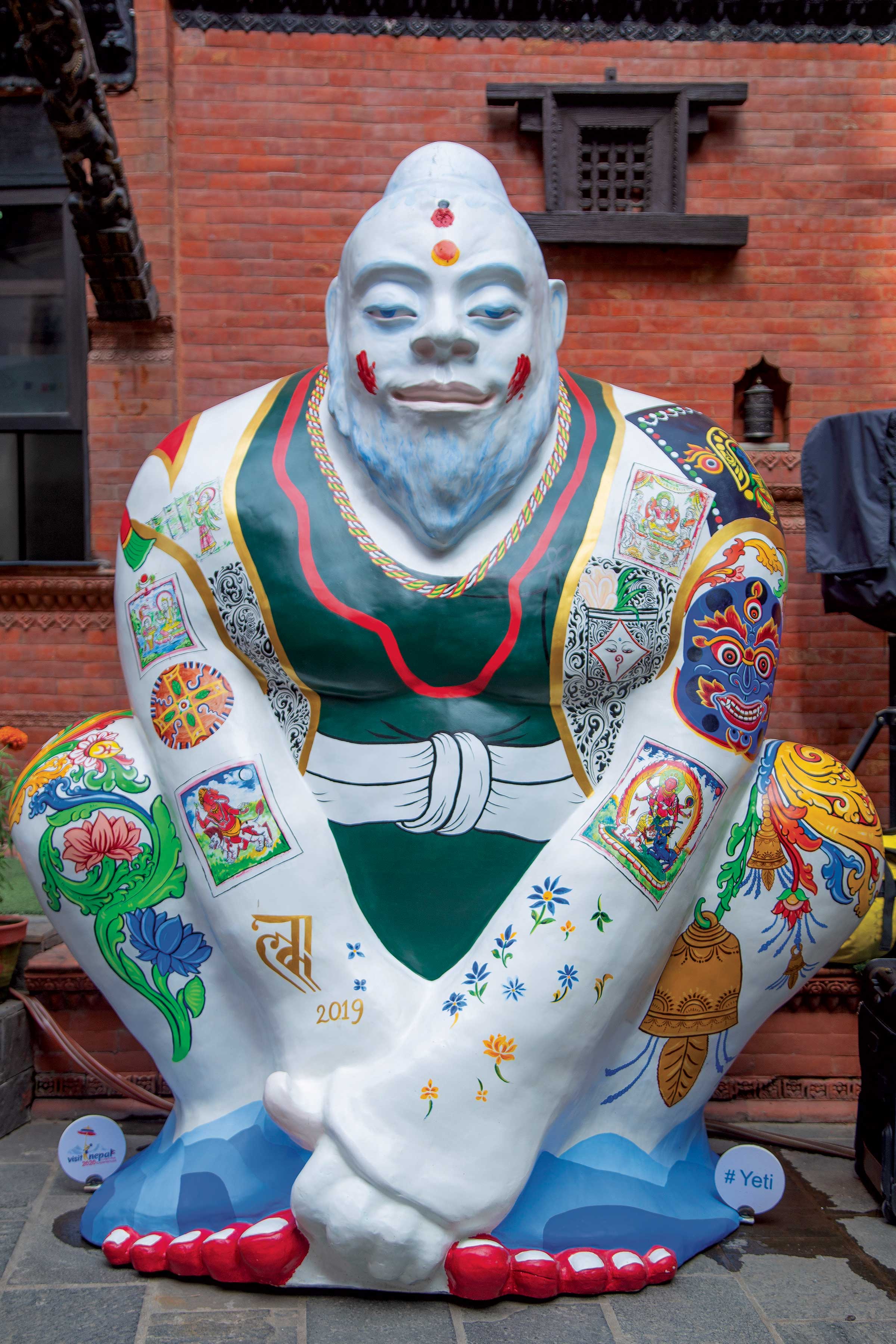As we drive south of the Kathmandu valley, we pass the huge complex of Tribhuvan University on the right, the dilapidated remains of the Himal Cement Factory to our left, and the legendary home of the Karkota Naga-Taudaha one of the few remaining wetlands in the valley. As we go past some beautiful fields and forests we come to the ancient village of Pharping. The name has a ring that historians tell us could place the age of the city into the ancient Licchavi period (2nd-7th century AD).
Now that a four wheel vehicle can take passengers pasat Pharping all the way to Hetauda in the Terai, one cannot help but assume that in ancient times, it must have been a key town between Vaisali and Kathmandu valley. The route follows the natural course of the Bagmati river.
Pharping is the site where the Yang Lesho cave is located and many Buddhists come here to pay respect to Rimpoche Padmasambhava who attained enlightenment. It is believed that this is where the great Guru brought the Nagas within the purview of Vajrayana. The vicinity of Pharping today also looks like a huge construction site for numerous Buddhist monasteries (perhaps over 20 big and small ones). They have been attracted to this place because so many Tibetan gurus meditated and attained enlightenment here.
Pharping is also home to the sacred Vajrayogini who is believed to be the symbol of pure awareness and wisdom (jnana or gyana). She is also worshipped as the Nil (blue) Tara. The residence of the Blue Vajrayogini is called Phampi Bahal. A Bajracharya priest of Patan performs the rites here and the bahal (local residence community) does not seem to have an active sangha (religious assembly). Every summer there is an annual festival where the image of the Tara is taken around Pharping. The residence has been rebuilt numerous times which is obvious from the old and new building materials and techniques we see here. The town of Pharping is said to have been built and expanded to the present size during the reign of King Bhimarjun in 797AD.
Pharping is also believed to get its name from the epithet of Shesh Narayan Phannathingu. This is one of the four Narayan temples that mark the four corners of the Kathmandu valley. The date on the stone inscription at the Changu Narayan temple at the east end of the valley would also indicate that this place was well established in the 5th century AD. Located above two pools of fresh water, the shrine celebrates Vishnu in his dormant form confounded with the cosmic serpent, Sesh Naga or Ananta.
Coming closer to our times in 1911AD, the Pharping hydropower project was completed after two years of construction as the first ever hydropower plant in Nepal. The fact is that nearly a hundred years later we continue to live in the dark. The plant supplied power to the residence of then Prime Minster Chandra Shamshere at Singha Durbar where the today’s prime minister has his offices. The beautiful crystal chandeliers were lit up in the Belaeti Baithak with Pharping power. Street lights were also subsequently installed in Kathmandu old town and were popularly known as the “Chandra Batti” (Chandra’s lights). The old generators were made by General Electric! Records show that the British engineers were very impressed with what Nepali engineers had achieved. Today, it is sad that we wait for others to generate power for us.
Today, Pharping is also a popular destination for the people of Kathmandu who make promises to the temple of Dakshin (south) Kali. On a Saturday one has to wait in a long line to make the offerings and very often people sacrifice animals and birds here. The place is also a popular picnic spot. One can hear and watch large groups of people cooking, dancing to loud music and enjoying a game of cards each holiday. Pharping is also home to a famous school, the Tribhuvan Adarsha, where many of the current Nepali technocrats studied. The place has so many interesting places to see and enjoy. The fact that it is going to be on the more direct route to the Terai could be a blessing or a disaster depending on how the change is managed.










